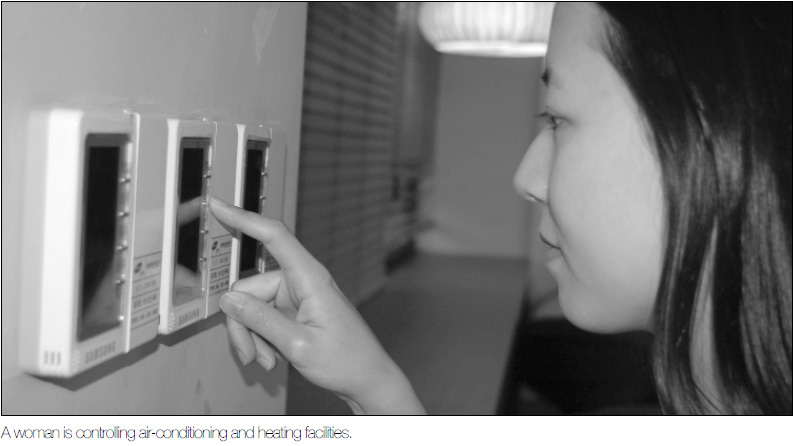
Last April, there was a little snow in some regions of Korea. Global warming has caused changes in the climate worldwide. This winter, it was too cold for a longer term. Under these conditions, is the indoor temperature of The Chungbuk National Univercity(CBNU) properly maintained?
The indoor temperature guideline in Korea is currently provided by the Ministry of Knowledge Economy. This standard depends on the weather forecasting of the Meteorological Administration. In 2012, the regulation of using energy in the summer was to maintain more than 18℃ in indoor public institutions. The regulation of using energy in the winter is to maintain less than 28℃ in indoor public institutions.
CBNU operates air-conditioning and heating facilities depending on these regulations. CBNU has four kinds of air-conditioning and heating facilities. The four kinds are district, electricity, gas and ground cooling and heating systems. However, each department of CBNU doesn’t have all four systems. CBNU is largely divided and has different air-conditioning and heating facilities. For example, the College of Engineering and the College of Natural Sciences have gas heating facilities and electricity air-conditioning. The College of Agriculture, Life, & Environments Sciences, the College of Human Ecology and the College of Veterinary Medicine have district cooling and heating systems. Also, the College of Education has ground air-conditioning and heating facilities.
CBNU departments have different air-conditioning and heating facilities, but they all have the same temperature rules. The reason is that CBNU has central air-conditioning and heating facilities, not individual air-conditioning and heating facilities. The standards of air-conditioning and heating in CBNU change every year. The Department of Facilities Management decides the temperature and periods of air-conditioning and heating system usage in accordance with the policy of the government and the weather forecasting of the Meteorological Administration. After that, they take the budget and plans to the university president. They control the temperature and times of the air-conditioning and heating facilities. The air-conditioning and heating facilities are controlled by the indoor automatic sensors.
Following this, CBNU maintained more than 28℃ in the summer and less than 18℃ in the winter last year. The period of the usage in the summer was 42 days, from June 15 to the end of August. The period of usage in the winter was 72 days, from December 15 to the middle of March. However, they fluidly operate the facilities on lots of variables at times. Lately, the weather has shown many strange phenomena. It suddenly gets cold or hot, and the summer and the winter have become longer. CBNU tries to fluidly deal with these to some degree. In the winter of 2012, it was too cold and winter became longer, so the period of the heating system was lengthened.
However, it is hard to actively deal with these strange phenomena. CBNU fluidly deals with these to some degree but shouldn't ignore the regulations of the government. Also, CBNU needs a month to prepare the operation. After the summer, administrators take out water from the cooling towers, clean these and prepare for the winter. Therefore, CBNU sends the official documents to each college and notifies students and staff on bulletin boards of CBNU. The notices are sent in May and November with the temperature and periods of the air-conditioning and heating usage.
CBNU needs to actively deal with these strange weather phenomena. Moreover, students should prepare proper clothing depending on notifications from CBNU and the weather forecast.
Lee Jeong-hae
ljh32@cbnu.ac.kr


 All
All Campus News
Campus News






 Lee Jeong-hae
Lee Jeong-hae











